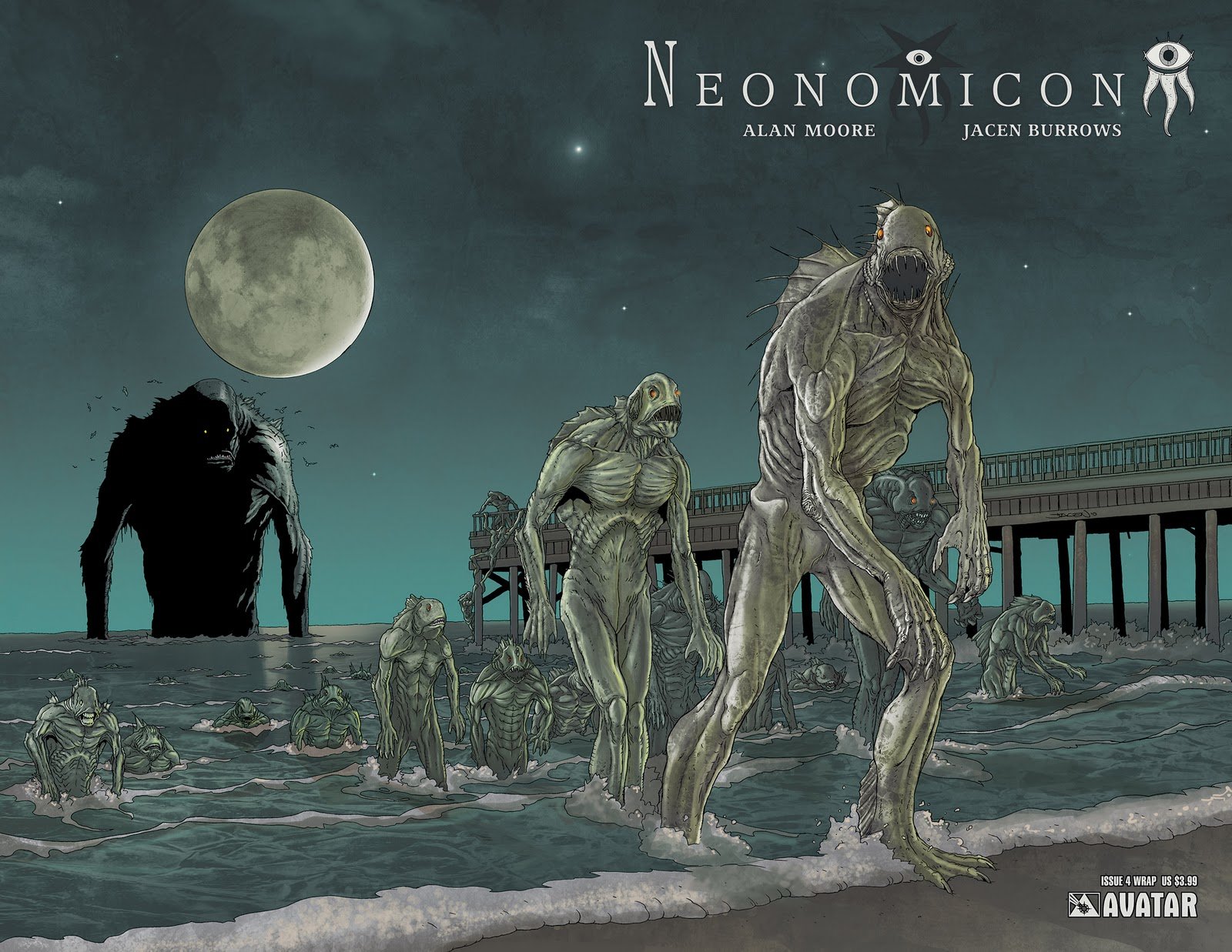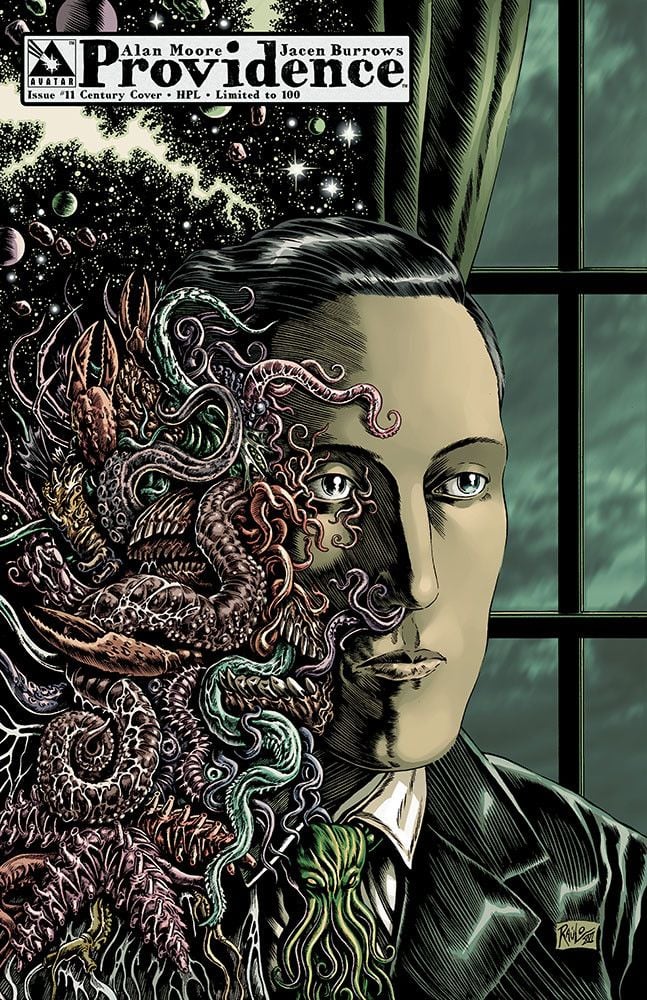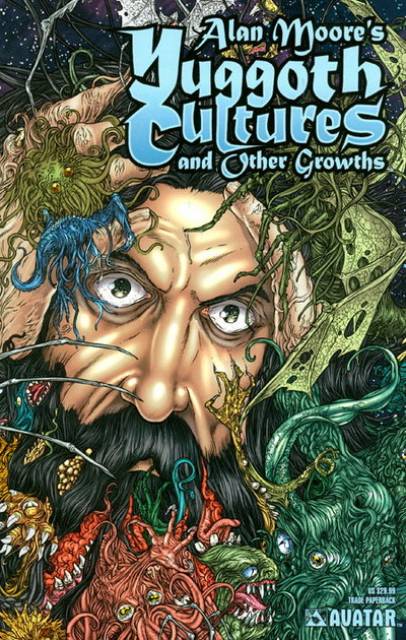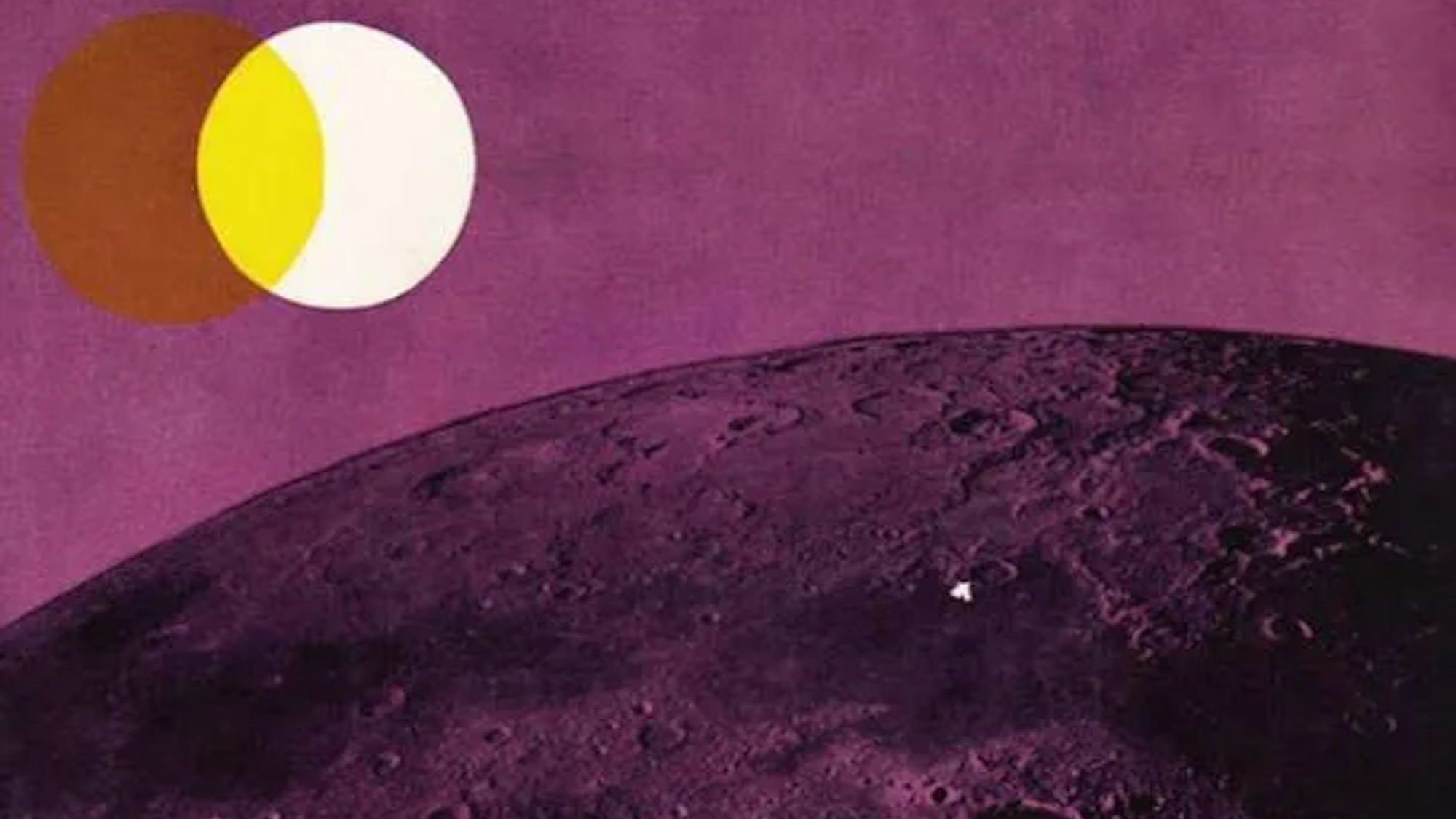Alan Moore
 www.inverse.com
www.inverse.com
> Some debates among superhero fans will never be resolved. Superman vs. Batman. Iron Man vs. Captain America. DC vs. Marvel. But if there’s one thing everyone seems to agree on, it’s that 1986 is the most important year in comic book history. The argument why is simple — that one year saw the release of several groundbreaking comics: > > 1. Frank Miller’s The Dark Knight Returns, an epic story about an elderly Batman who comes out of retirement to save Gotham City in the face of American decline. > 2. Alan Moore and Dave Gibbon’s Watchmen, a meticulous deconstruction of the entire superhero genre that’s also just a damn-good comic. > 3. Art Spiegelman’s Maus, which retold the story of the Holocaust to terrific effect in comic book form. > > ... > > But before Gibbons and Moore could deconstruct the entire superhero genre with Watchmen and change comics forever, they had to take on the most iconic superhero of them all. > > Released in 1985, “For the Man Who Has Everything,” is a Superman story unlike anything that came before (or after). The comic traps its hero in an alternate universe where his home planet of Krypton was never destroyed and he never left for Earth. Instead, Kal-El (aka Superman) lives a simple, fulfilling life with his wife and children, but what should feel like a utopia quickly gives way to social upheaval and violence. Moore and Gibbons imagine a version of Krypton that reflects the worst of our own society: crime, drugs, riots, xenophobia, police brutality, and a Ku Klux Klan-esque rally all quickly overwhelm Superman’s vision of a perfect life. > >In just 40 pages — while also fitting in a B-plot where Wonder Woman, Batman, and Robin fight an evil alien — “For the Man Who Has Everything” tells a powerful allegorical story that still resonates. > > ... > > “For the Man Who Has Everything” paved the way for the sort of social and political commentary we now take for granted in mainstream superhero stories. Without this one comic (and the deluge of instant classics that followed a year later) today’s superheroes would be a lot less interesting. But to understand how this shift was even possible, we have to go back to a time when a generation that grew up on comic books finally got a chance to make some of their own.
cross-posted from: https://feddit.uk/post/8838989 > > Alan Moore is generally considered the greatest writer in the comic medium. This year, Moore releases one last comic — The Moon And Serpent Bumper Book — a mixture of prose and traditional comic format from indie publishers Top Shelf Productions and Knockabout Limited. Moore has crafted indie comics since the '90s, after his split from DC Comics... > > > > Alan Moore also wrote some brilliant stories in the indie comic genre (some of which, the Big Two published at a later date). Writing indie comics, Moore had the freedom to take his projects in any direction he wanted, resulting in masterpieces that readers could hardly put down. Alan Moore is a legend, and his indie work often surpasses the Big Two comics that he's known for. > > The list is: > > 1. From Hell > 2. The League of Extraordinary Gentlemen Volume Two > 3. Providence > 4. Marvelman/Miracleman > 5. The League of Extraordinary Gentlemen: The Black Dossier > 6. Promethea > 7. The Ballad of Halo Jones > 8. WildC.A.T.s > 9. 1963 > 10. Big Numbers edit: making an ordered list
> Many readers of Alan Moore—the prolific and influential author of Watchmen, V for Vendetta, Jerusalem, and, most recently, The Great When—are enchanted by the magic of his creative vision. For his next trick, The Moon and Serpent Bumper Book of Magic, Moore would like you to come away with a respect for, and perhaps even a belief in, magic itself. > >The 400+ page grimoire, coauthored with the late Steve Moore (no relation) and published by IDW’s Top Shelf Productions imprint, combines a lively and accessible history of ritual magic, practical guidance on how and why to use such techniques as tantra and Tarot, and amusing summaries of the lives of magical practitioners through the years—from Hermes Trismegistus to Alistair Crowley—done as single-page comics. Moore spoke with PW via email about the Bumper Book, magic, superheroes, and more. > > ... > > On the matter of the comic strip medium and its possible links to occult consciousness, however, I think there’s a much stronger case to be made: I believe it was during the 1980s that a Pentagon study concluded that the comic strip medium’s combination of pictures and words in sequence was the most efficient way of passing on complex information in a way that was likely to be retained. Unsurprised, but wondering why this might be, it occurred to me that the image, being preverbal, is the prevailing unit of currency in what used to be called our right brain, while the word is the prevailing currency of what used to be called our left brain. Might it be that the way we read comic strips engages these two “halves” of our brain on the same task, both at once? > >In the Bumper Book, we propose that it was representational markings, or imagery, that gave us the key to written language, which in turn provided the key to modern consciousness, which our gradually dawning minds interpreted as magic. I suggest that the comic strip form, used correctly, can be a near-perfect medium for transmitting magical ideas, a bit like the poetic “language of the birds” that the alchemists construed as the ideal way to communicate concepts pertaining to alchemy. After all, our earliest cave-wall comic strips were probably intended magically. > > *Historically and even today, most people's conception of magic involves invoking supernatural forces to affect the outside world, and people typically either believe in it credulously or dismiss it as mumbo-jumbo. In The Moon and Serpent Bumper Book of Magic, you make clear that the purpose and effect of these belief systems has mainly been to transform our inner selves and perceptions. How and why do you think these two distinct ideas got so muddled throughout history? Does magic have a PR problem?* > > ... > > Amidst all this, we felt that any real human importance or social use for magic was being lost in a sea of either fatuous make-believe or Master of the Dark Arts theatrics. So, with the Bumper Book, we wanted to present what we hope are lucid, coherent and joined-up ideas on how and why the concept of magic originated and developed over the millennia, a theoretical basis for how it might conceivably work along with suggestions as to how it might practically be employed—and, perhaps most radically, a social reason for magic’s existence as a means of transforming and improving both our individual worlds, and the greater human world of which we are components. And we wanted to deliver this in a way that reflected the colorful, psychedelic, profound and sometimes very funny nature of the magical experience itself. That, we felt, would be the biggest and most useful rabbit to pull out of the near-infinite top hat that we believe magic to be.
> Fossil Angels was written by Alan Moore in December 2002, and was to appear in KAOS #15. KAOS #15 never actually appeared, and the piece has been without a home since then. (More information about KAOS and why this wasn't published there in [this](http://www.bleedingcool.com/2010/10/20/unearthing-alan-moores-fossil-angels/) article on Bleeding Cool.) I was lucky enough to be given a number of Alan Moore’s scripts by Alan himself a few years ago, and this was amongst them. I asked if I could publish it and, when another publication which it was slated to appear in folded, Alan told me I was free to go ahead. So, I am very proud to be allowed to present this piece here on Glycon for its first publication anywhere. It is in two parts, with a link to the second part at the end of this page. This is, and remains, the sole property and copyright of its creator, Alan Moore. > >>FOSSIL ANGELS >> >>Regard the world of magic. A scattering of occult orders which, when not attempting to disprove each other’s provenance, are either cryogenically suspended in their ritual rut, their game of Aiwaz Says, or else seem lost in some Dungeons & Dragons sprawl of channelled spam, off mapping some unfalsifiable and thus completely valueless new universe before they’ve demonstrated that they have so much as a black-lacquered fingernail’s grip on the old one. Self-consciously weird transmissions from Tourette’s-afflicted entities, from glossolalic Hammer horrors. Fritzed-out scrying bowls somehow receiving trailers from the Sci-Fi channel. Far too many secret chiefs, and, for that matter, far too many secret indians. Available as a PDF [here](https://fratersef.files.wordpress.com/2013/06/fossil-angels.pdf).

cross-posted from: https://lemmy.world/post/20662627 > Alan Moore and Jacen Burrows have collaborated on notable comic series that delve into the works of H.P. Lovecraft, particularly through Neonomicon and Providence. > > Neonomicon is a four-issue comic series published from 2010 to 2011, which serves as a sequel to Moore's earlier work, The Courtyard. The story follows FBI agents who uncover a cult linked to Lovecraft's writings. > > Providence > Following Neonomicon, Providence was published between 2015 and 2017. This twelve-issue series acts as both a prequel and sequel to Moore's previous works. Critics have described Providence as "the Watchmen of horror," highlighting its depth and complexity > > --- > > https://factsprovidence.wordpress.com/moore-lovecraft-comics-annotation-index/ : A list of all the of Alan Moore and Jacen Burrows H.P. Lovecraft comics issue by issue, including covers – as well other Moore/Lovecraftian works in collaboration with other artists, and related items. > > >  > > >  > > > 
 bleedingcool.com
bleedingcool.com
> We are going to see a lot of Alan Moore this month, with the release of two books: his final graphic novel, The Moon And Serpent Bumper Book Of Magic in two weeks and today sees the release of the first of his five Long London novels, The Great When set in 1949 in an alternative London. The subsequent books will be set in 1959, 1969, 1979, and then jumping to 1999. And now, we have learned the name of the second of that novel, I Hear A New World. > > The second book is titled after the album by Joe Meek, I Hear A New World, recorded in 1959 but released in 1960, subtitled "an outer space music fantasy". ... But he is also famed for taking a shotgun owned by musician Heinz Burt, killing his landlady, Violet Shenton, and then shooting himself in 1967. Those last moments of Joe Meek's life also featured in Alan Moore's spoken word performance art piece The Highbury Working, A Beat Séance, created by The Moon and Serpent Grand Egyptian Theatre of Marvels collaborative team of Moore, David J, and Tim Perkins and performed on the 20th of November 1997 at the performance club Absorption at The Garage in Highbury, with dancer Paule van Wijngaarden. > > Joe Meek will also appear in the novel, I Hear A New World, as a character, alongside The Great When's Dennis Knuckleyard. Expect a lot more Alan Moore with Zoom events to book festivals the world over, such as today's Wisconsin Book Festival being interviewed by Benjamin Percy in a couple of hours. Or at the Century Club in London in a couple of weeks. Then there will be the inevitable Guardian article about Alan Moore and superheroes, reviews in The Times newspaper. and plenty of the usual kinds of headlines that will spill out. Oh, and The Great When to top the bestseller charts…
 www.thetimes.com
www.thetimes.com
> A well-known comics writer once told me that the mistake almost every conventional novelist who takes a turn writing comics initially makes is trying to put too many words into a panel. I wonder whether the opposite applies to writers who hop art forms in the other direction: freed at last from the rigid discipline of the speech bubble, they go bananas. > >When Alan Moore, the graphic novelist best known for Watchmen, wrote his 2016 novel Jerusalem it was 1,200 pages long. Although his latest book, The Great When — the first in a projected series of “Long London” novels — is a manageable 300-odd pages, the style has something about it of a man who has spent a career writing in a medium where you don’t get to use similes or adjectives much and is now making up for lost time. > >So, when a character smiles, we discover that “her smile was sunrise on a renderer’s yard, its dire light creeping into every crevice and uncovering each gruesome spectacle. The corners of her mouth crawled back towards pendulous ears, exposing the magnolia cemetery of her dentition.” > > ... > > The Great When, then, is both gothic and baroque. But so is its subject: the jostling, chaotic, crosspatch, antic and overstuffed city where it is set. It’s 1949. Moore’s version of postwar London is a landscape of bombsites furzed with wildflowers (“London rocket”), smoky pubs, voluble whelk-vendors, Oxo ads, Lyons Corner Houses and men in fawn raincoats, where a cup of weak tea and a sausage sandwich or a dinner of pilchards on toast is never far away. > > ... > > The plot kicks off when Dennis is sent to Soho to collect a handful of old Arthur Machen editions from a dealer. He returns to Coffin Ada to discover that, slipped among these volumes, is a copy of A London Walk by the Rev Thomas Hampole. Coffin Ada goes nuts. A London Walk is a book that shouldn’t exist — a book that appears in one of Machen’s stories. It has come from Somewhere Else. And it’s trouble. > > The premise of The Great When is that the London we know is shadowed by — or, to be more precise, is the shadow of — a boisterous and dangerous eldritch counterpart, The Great When or Long London, peopled with hallucinatory demigods. The unfortunate or deranged can tumble into Long London through hidden portals when they’re not paying attention. Worse, other things sometimes tumble out. The Ripper murders, we learn en passant, were the result of a “Pope of Blades” (a hideous insectoid thingy) escaping into our London in 1888. The book that shouldn’t exist belongs to that realm, and if it isn’t returned quickly something very bad will happen. The last time a book escaped, the person into whose possession it came was turned inside out. > > ... > > The cast hops in and out of Long London — and in and out of their wits. It’s a romp, and it’s full of loving attention to the past. That postwar London is deeply imagined and Moore’s literary influences — as well as Machen, he tips the hat to Iain Sinclair and Michael Moorcock in an afterword — are warmly acknowledged. > >As for the style, the reader will find of it, I think, what Dennis finds of Machen: “At first, he struggled with what he perceived as stuffiness in the tale’s presentation, although by the time he’d read a page or two, the burnish of its language and its atmospherics had seduced him.” Just like the old pulps that are so close to the author’s heart (torn pages of Sax Rohmer people the gutter outside Ada’s shop), there’s a delirious and generous campness to The Great When. Freed from the tyranny of the speech bubble, you sense Moore is really, really having fun. [Archive](http://web.archive.org/web/20240929015153/https://www.thetimes.com/culture/books/article/great-when-alan-moore-review-kmmhf288r)